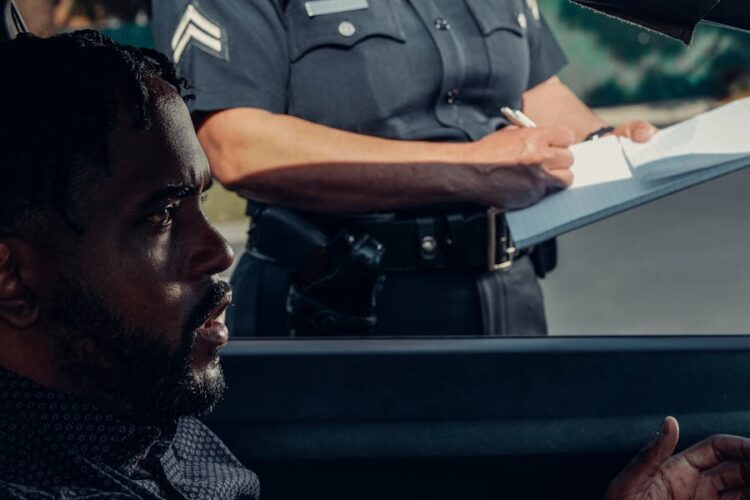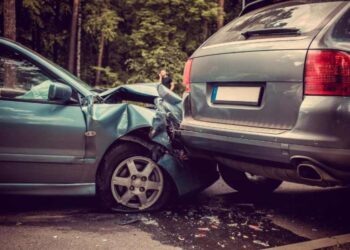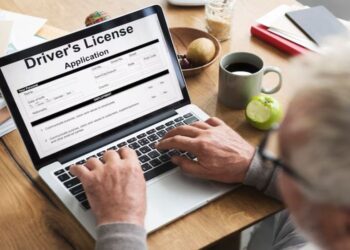There’s currently a traffic safety crisis on American roads. Road mishaps cause undue hardship to many families nationwide. In 2023 alone, the National Highway Traffic Safety Administration (NHTSA) estimates that some 40,990 people died in car crashes.
The need to get somewhere quickly is tempting, but it comes at a terrible cost. One mistake and the consequences can be life-altering for the victims and their families.
The human toll of speeding accidents is already high, but they also carry legal repercussions. One can expect lengthy legal battles, but police accident reports can help win lawsuits. They offer the evidence needed to pin down speeding drivers.
The Science Behind Speeding Risks
Why does speeding increase the risk of accidents? The answer is multifaceted:
Reaction Time vs. Stopping Distance
Reaction time is the time a driver needs to understand there’s a hazard and take action. Even if the driver is not intoxicated and their reaction time is the same, the stopping distance is shorter when speeding.
Impact Severity
Basic physics tells us the force of a collision increases with speed. When a driver is speeding, they are building up on kinetic energy. This dissipates explosively during a collision, which can overwhelm safety measures such as seatbelts and airbags.
Loss of Control
When speeding, there’s a greater chance of the driver losing control. The higher the speed, the more sensitive the steering becomes. A drastic turn of the steering wheel, which could easily be corrected if the car is running slower, could be devastating at very high speeds.
Increased Risk for Pedestrians and Cyclists
Speeding gives less time to react to others who share the road. Cyclists, motorcyclists, and pedestrians are particularly at risk. They’re not as protected from such accidents, and the impact of a speeding vehicle can cause severe injuries or fatalities.
Reduced Awareness of Surroundings
Speeding drivers are more prone to tunnel vision. The driver’s focus narrows to the immediate area in front of them. This leads to a reduced ability to be aware of surroundings and potential hazards, like merging cars or barriers.
The Human Cost of Speeding
Speeding endangers everyone on the road. But the most vulnerable are the pedestrians, cyclists, and motorcyclists. A collision with a speeding vehicle can cause death or severe injuries that can lead to the victim being permanently disabled.
Car accidents also bring with them a heavy legal and financial burden. The costs can include property damage, vehicle repairs, medical and rehabilitation expenses, and lost productivity and wages.
Beyond the physical injuries, speeding accidents cause severe emotional trauma for those involved. This includes survivors’ guilt, where drivers involved in accidents, even if not at fault, can experience guilt and distress.
Survivors of serious accidents, or those who witness them, can develop post-traumatic stress disorder (PTSD). PTSD can be debilitating and significantly impact their daily lives.
The economic cost of speeding is also a government concern. According to the NHTSA, car crashes cost Americans $340 billion in 2019. This is equivalent to $1,035 per American.
Speeding accidents have a ripple effect on society. The medical care for crash victims strains healthcare systems and ties up emergency personnel. Also, the American workforce is affected for every human loss.
Additional Consequences of Speeding
There are other penalties speeding drivers should worry about. While they vary by state, these often include:
- Fines. Fines can reach hundreds to even thousands of dollars depending on the severity of the violation. Fines can be significantly higher if the driver exceeds the speed limit by a large margin.
- Court costs. In addition to fines, there are court costs that the offender must shoulder when they need to appear on court. Attorney’s fees can also prove expensive.
- Increased insurance rates. Insurance companies see speeding tickets as a sign of risky driving. This can lead to higher insurance premiums.
- Towing and impound fees. If speeding leads to a car being impounded, the associated towing and storage fees can be substantial.
Speeding can also impact a driver’s privileges:
- Demerit points accumulation. Each traffic violation has corresponding demerit points. Drivers accumulate these points on their licenses.
- License suspension. The duration of license suspension varies by jurisdiction. It is often tied to the number of offenses.
- Restricted licenses. Some states might issue restricted licenses for repeat offenders. They can only drive in certain situations, such as medical emergencies.
Strategies for Safer Roads
To address speeding, various approaches are needed. These include the strict enforcement of speed limits, road improvements, as well as educating the public.
Enforcement
Of course, the most immediate solution is for drivers to follow road rules. The presence of law enforcement is a powerful deterrent. Increased presence of enforcers, especially in accident-prone areas, will send a clear message to would-be offenders.
Infrastructure
Safe roads require meticulous road design. A well-designed road will influence driver behavior, and traffic-calming infrastructure like narrow lanes, median barriers, and roundabouts can reduce the likelihood of speeding. Also, providing dedicated lanes and crosswalks for pedestrians and cyclists can help ensure their safety.
Education
Educating drivers is also important. Public awareness campaigns can shift attitudes away from speeding. Education programs also help instill responsibility and road etiquette.
Community Engagement
Neighborhoods can also become proponents of safe driving. Advocating for lower speed limits or speed bumps can create safer environments for residents. Programs such as school zone safety help teach drivers about driving safely around schools.
A Call for Collective Action
The thrill of speed is fleeting. However, the consequences are not. Every life lost or injury brought by speeding is a stark reminder of how high the price is for this gamble.
By making sure that we adhere to road rules and practice self-discipline in driving, we reduce this price. Committing to becoming responsible drivers is a conscious, continuous choice. It isn’t a one-time deal.
Let’s commit to becoming responsible drivers, advocating for safer infrastructure and stricter enforcement. We can collectively create a culture that values safety over speed. On the road, the finish line isn’t a checkered flag; it’s to be safely home with our loved ones.










